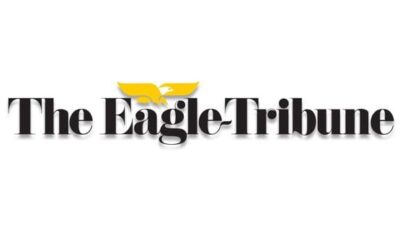Technology
Hybrid Fiber Coaxial Market Set to Reach USD 24.37 Billion by 2031

The global Hybrid Fiber Coaxial (HFC) market is on a trajectory to achieve a revenue of USD 24.37 billion by 2031, growing at a compound annual growth rate (CAGR) of 8.78% from 2024 to 2031. This forecast comes from a report published by Verified Market Research, highlighting the significant demand for high-speed broadband and advancements in digital infrastructure.
The growth of the HFC market can be attributed to several key factors, primarily the increasing demand for reliable and high-speed broadband connectivity. The ongoing digital transformation, coupled with a surge in remote work and the popularity of over-the-top (OTT) streaming services, has intensified the need for robust broadband solutions. HFC networks, which combine fiber optics with coaxial cables, offer a cost-effective means for telecom operators to upgrade their existing infrastructures without incurring exorbitant capital expenditures.
Drivers of Growth in the HFC Market
One of the main drivers behind the HFC market’s expansion is the rising demand for high-speed broadband connectivity. As data traffic continues to soar, industries across residential, commercial, and industrial sectors are prioritizing reliable internet access. HFC technology enables telecom operators to achieve gigabit speeds through the deployment of DOCSIS 3.1 and the anticipated DOCSIS 4.0 standards, thus enhancing user experience while minimizing latency.
Furthermore, the rapid expansion of digital infrastructure and smart city initiatives is propelling market growth. Governments and private sector players are heavily investing in broadband networks to support Internet of Things (IoT) applications, artificial intelligence (AI)-driven urban management, and connected ecosystems. HFC technology is particularly advantageous for large-scale deployments, facilitating applications such as public Wi-Fi and surveillance systems while ensuring lower total costs compared to full-fiber solutions.
Technological advancements in DOCSIS standards are also pivotal for the HFC market. Upgrades to DOCSIS 4.0 promise improved upstream and downstream speeds, thereby enabling multi-gigabit data transfer over existing coaxial lines. These innovations empower service providers to modernize their networks without the need for a complete fiber overhaul, thus making HFC a competitive alternative to full-fiber networks.
Challenges Facing the HFC Market
Despite the promising outlook, the HFC market faces challenges that could impede its growth. One primary concern is the high initial capital expenditure associated with deploying hybrid networks. Equipment costs, labor, and system integration expenses can be substantial, particularly for smaller Internet Service Providers (ISPs). In many developing regions, financial constraints further limit the ability to upgrade legacy systems, hindering the widespread adoption of HFC technology.
Additionally, competition from Fiber-to-the-Home (FTTH) networks presents a significant challenge. FTTH offers superior performance metrics, such as higher speeds and reliability, compelling many telecom operators to invest heavily in all-fiber infrastructure. This shift in preference poses a risk to HFC’s market share, particularly in urban areas where consumers demand the latest technology.
Technical complexities in maintaining and integrating hybrid networks also present operational hurdles. The need for skilled technicians to manage both fiber and coaxial components adds to operational costs. Aging coaxial infrastructure can lead to signal degradation, necessitating frequent maintenance to ensure optimal performance.
Geographically, North America currently dominates the HFC market, bolstered by robust broadband infrastructure and rapid adoption of DOCSIS 4.0 in the U.S. and Canada. Europe is also a strong player, with significant investments in digital transformation. In contrast, the Asia-Pacific region, particularly countries like China, Japan, and India, is witnessing the fastest growth due to increasing internet penetration and expansive telecom projects.
As the demand for high-speed broadband continues to rise, the HFC market presents substantial opportunities for telecom operators and equipment manufacturers alike. Strategic partnerships and cost-optimized hybrid models are essential for tapping into this growing market, particularly in regions where full fiber deployment remains financially prohibitive.
With a focus on leveraging next-generation HFC solutions, stakeholders can position themselves advantageously in an increasingly competitive global broadband landscape.
-

 Technology5 months ago
Technology5 months agoDiscover the Top 10 Calorie Counting Apps of 2025
-

 Health2 months ago
Health2 months agoBella Hadid Shares Health Update After Treatment for Lyme Disease
-

 Health3 months ago
Health3 months agoErin Bates Shares Recovery Update Following Sepsis Complications
-

 Technology4 months ago
Technology4 months agoDiscover How to Reverse Image Search Using ChatGPT Effortlessly
-

 Technology1 month ago
Technology1 month agoDiscover 2025’s Top GPUs for Exceptional 4K Gaming Performance
-

 Technology2 months ago
Technology2 months agoElectric Moto Influencer Surronster Arrested in Tijuana
-

 Technology5 months ago
Technology5 months agoMeta Initiates $60B AI Data Center Expansion, Starting in Ohio
-

 Technology5 months ago
Technology5 months agoRecovering a Suspended TikTok Account: A Step-by-Step Guide
-

 Health4 months ago
Health4 months agoTested: Rab Firewall Mountain Jacket Survives Harsh Conditions
-

 Lifestyle5 months ago
Lifestyle5 months agoBelton Family Reunites After Daughter Survives Hill Country Floods
-

 Technology4 months ago
Technology4 months agoHarmonic Launches AI Chatbot App to Transform Mathematical Reasoning
-

 Technology3 months ago
Technology3 months agoUncovering the Top Five Most Challenging Motorcycles to Ride




















